Flight Buzz
Etihad joins JetBlue, Icelandair, Aer Lingus, Air Astana in ordering new premium narrowbody flights, Latest update you need to know
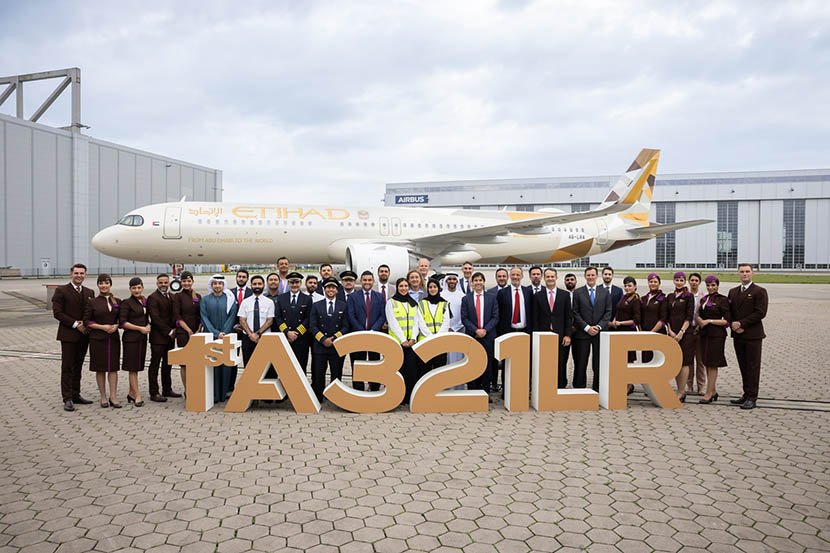
Sunday, July 27, 2025
Etihad Airways has joined the ranks of JetBlue, Icelandair, Aer Lingus, Air Astana, and Air Transat by ordering premium narrowbody flight travel. This significant move marks a new era in the airline’s fleet strategy, expanding its capabilities to serve both short and long-haul routes with enhanced luxury. By incorporating the Airbus A321LR into its fleet, Etihad is aligning with other global airlines that are increasingly adopting premium narrowbody aircraft for their operations.
The decision to embrace this aircraft comes at a time when the demand for more efficient, yet luxurious, flight options is rising. Just like JetBlue and Icelandair, Etihad sees the potential to offer passengers an elevated experience on narrowbody planes with premium cabins and innovative features typically reserved for widebody aircraft. Similarly, Aer Lingus, Air Astana, and Air Transat have already begun to take advantage of the A321LR’s extended range and fuel efficiency, combining operational flexibility with exceptional passenger comfort.
Incorporating the A321LR into its fleet, Etihad will now be able to offer its signature luxury experience across more destinations, enhancing its service offering for both leisure and business travelers. With this new addition, Etihad follows in the footsteps of other forward-thinking carriers, ensuring that passengers enjoy a premium flying experience on narrowbody routes.
Etihad Airways’ First Airbus A321LR Takes Off: A New Era in Premium Narrowbody Travel
Etihad Airways has recently taken delivery of its first Airbus A321LR, marking a transformative milestone in the airline’s fleet expansion. This new aircraft promises to redefine narrowbody travel by bringing the premium experience typically reserved for long-haul flights to short and medium-haul routes. With luxury cabins and innovative features, Etihad is setting a new standard in single-aisle aviation, and this is just the beginning.
A New Era for Etihad Airways
The delivery of Etihad’s first Airbus A321LR represents a pivotal moment in the airline’s journey. This aircraft is the first of 30 A321LR aircraft that will join the fleet as part of the airline’s growth strategy. The A321LR is a game-changer for Etihad, as it offers the same luxurious experience typically found on widebody aircraft but within a single-aisle plane. This delivery signals the airline’s commitment to providing passengers with top-notch service and comfort, whether flying short or long-haul routes.
Etihad’s Chief Executive Officer, Antonoaldo Neves, expressed the significance of the aircraft, stating, “Today marks an extraordinary moment for Etihad as we welcome an aircraft that changes everything we thought possible on a single-aisle plane.” This aircraft allows Etihad to expand its network while maintaining the premium experience their guests expect.
Redefining Narrowbody Travel with the A321LR
One of the standout features of the Airbus A321LR is its three-cabin configuration, which includes the first-ever narrowbody First Suites. These private, enclosed spaces are a first for Etihad on narrowbody aircraft, offering passengers an unparalleled level of privacy and comfort. Each suite includes a fully-flat bed, sliding doors, and bespoke design touches, creating an environment typically reserved for long-haul flights. Additionally, the First Suites are equipped with a 20-inch 4K screen, Bluetooth pairing, wireless charging, and ample space for a companion to join.
The Business cabin on the A321LR is equally impressive, featuring 14 seats arranged in a 1-1 herringbone layout. This configuration ensures that every passenger has direct aisle access and enjoys a window view. The seats are equipped with a 17.3-inch 4K screen, Bluetooth headphone pairing, and wireless charging, providing passengers with the same level of comfort found in widebody business class cabins.
Etihad also paid special attention to Economy class, where 144 seats are designed to offer maximum comfort on short and medium-haul flights. Passengers enjoy generous space and 13.3-inch 4K touchscreen displays, USB charging, and Bluetooth connectivity. The aircraft’s enlarged overhead bins also provide significantly more luggage space than traditional narrowbody aircraft, ensuring a more convenient travel experience.
The Premium Experience Across All Cabins
Etihad has designed its A321LR with luxury in mind. The aircraft brings its signature widebody experience to every cabin, ensuring that all passengers, regardless of class, receive a top-tier travel experience. From First Suites to Economy, the A321LR is a true testament to Etihad’s commitment to luxury and customer satisfaction.
The cabin features onboard amenities that make flying more enjoyable, such as high-speed Wi-Fi powered by Viasat’s advanced technology. With speeds of up to 100 Mbps, passengers can stream, game, and browse seamlessly during their flight, keeping them connected throughout their journey. Etihad’s high-speed Wi-Fi will be progressively rolled out across Asian routes, with full availability expected by September 2025.
A Strategic Move for Etihad Airways’ Growth
The delivery of the A321LR supports Etihad Airways’ ambitious expansion strategy. The airline has already launched or announced 27 new routes in a single year, signaling a robust growth trajectory. The A321LR is expected to play a key role in this growth, enabling Etihad to serve more destinations while maintaining its high standards of service.
The aircraft will enter commercial service on August 1, 2025, with initial flights between Abu Dhabi and Phuket. From there, the A321LR will be deployed on various routes, including Algiers, Bangkok, Chiang Mai, Copenhagen, Düsseldorf, Kolkata, Milan, Paris, and Zurich. This expansion supports Etihad’s Vision 2030, which aims to carry 38 million passengers annually by the year 2030.
Enhancing Connectivity from Abu Dhabi
The A321LR is integral to Etihad’s broader strategy to strengthen Abu Dhabi’s position as a leading global aviation hub. As Etihad continues to expand its operations, this new aircraft will help the airline serve more destinations from Abu Dhabi, making it easier for passengers to travel to key markets across Asia, Europe, and beyond.
The increased connectivity will benefit both business and leisure travelers, allowing Etihad to offer a seamless travel experience across its expanding network. With its combination of premium cabins, advanced technology, and efficiency, the A321LR is set to elevate Etihad’s offerings and enhance the airline’s reputation for excellence in air travel.
A Bright Future Ahead for Etihad Airways
The introduction of the A321LR is just the beginning of a new era for Etihad Airways. With additional deliveries of A321LR aircraft throughout 2025, the airline is positioning itself to meet growing demand while continuing to provide luxury and service at every altitude. Etihad’s ambitious growth plans are supported by its strong relationship with Airbus, which has helped deliver an aircraft that sets a new standard for comfort in the single-aisle category.
Etihad Airways’ journey to becoming a leader in global aviation continues with the A321LR. The aircraft is a powerful symbol of the airline’s commitment to innovation, quality, and customer satisfaction. As Etihad expands its reach and enhances its fleet, passengers can look forward to a premium flying experience, whether traveling for business or leisure.
Conclusion: A Game-Changer for Etihad and the Aviation Industry
The delivery of Etihad’s first Airbus A321LR marks a milestone in the airline’s journey towards redefining narrowbody travel. With its premium cabins, advanced technology, and increased connectivity, the A321LR is setting a new standard for comfort and efficiency on short and medium-haul flights. Etihad Airways continues to push the boundaries of air travel, ensuring that passengers can enjoy the same luxury experience across its entire fleet. As the airline expands its operations and introduces more A321LR aircraft, the future looks bright for Etihad Airways and its passengers.
Airbus A321LR Revolutionizes Narrowbody Travel: The Future of Efficient and Premium Air Travel
The aviation industry has entered a transformative phase with the widespread adoption of the Airbus A321LR (Long Range). This narrowbody aircraft is changing the landscape of both short-haul and long-haul flights, providing airlines with a versatile solution to expand their route networks while delivering premium experiences to passengers. Airlines around the world are leveraging the A321LR’s extended range, fuel efficiency, and passenger comfort to serve new destinations, improving operational flexibility without compromising the in-flight experience. As more airlines integrate this aircraft into their fleets, the future of narrowbody travel is being redefined.
The Airbus A321LR: A Game-Changer for Narrowbody Aircraft
The Airbus A321LR is a long-range version of the popular A321neo aircraft, designed to provide airlines with an efficient alternative for medium to long-haul routes typically served by widebody aircraft. With a range of approximately 7,400 kilometers, the A321LR allows carriers to serve transatlantic and transcontinental routes with a single-aisle configuration, offering a unique combination of operational efficiency and passenger comfort.
The A321LR’s extended range opens up new possibilities for airlines to expand their operations, especially in underserved markets or regions where widebody aircraft would be inefficient or unnecessary. Airlines no longer need to rely on large, widebody jets for many routes, as the A321LR offers the flexibility and fuel efficiency to serve these destinations with a narrowbody aircraft. This shift allows airlines to offer a higher number of point-to-point services, optimizing their fleets and providing better access to both business and leisure travelers.
Premium Experience on Narrowbody Aircraft
One of the key features that sets the A321LR apart from other narrowbody aircraft is its ability to offer a premium experience typically reserved for widebody flights. As airlines look to elevate the passenger experience on short and medium-haul routes, the A321LR’s configuration allows for spacious, comfortable cabins with high-quality amenities.
Etihad Airways, for example, has incorporated the A321LR into its fleet with a three-cabin configuration that includes narrowbody First Suites. These First Suites feature fully-flat beds, private enclosed spaces, and sliding doors—luxuries typically found on long-haul, widebody aircraft. Passengers in the First Suite enjoy a 20-inch 4K screen, Bluetooth pairing, and wireless charging, providing a premium experience that redefines expectations for narrowbody travel.
In Business Class, Etihad offers 14 seats arranged in a 1-1 herringbone layout, giving every passenger direct aisle access and a window view. Each seat features a 17.3-inch 4K screen, Bluetooth headphone pairing, and wireless charging. The airline’s commitment to providing luxury on narrowbody aircraft sets a new benchmark for premium service on medium-haul flights.
The economy class on the A321LR also features enhancements, such as 144 spacious seats with 13.3-inch 4K touchscreen displays, USB charging, and Bluetooth connectivity. With a generous seat pitch and modern design, passengers can enjoy an elevated experience that includes in-flight entertainment and comfort on single-aisle aircraft.
Fuel Efficiency and Environmental Impact
In today’s environmentally conscious world, airlines are increasingly looking for ways to reduce their carbon footprint while maintaining profitability. The Airbus A321LR meets this demand by offering significant fuel savings compared to traditional widebody aircraft. With improved aerodynamics, new engines, and optimized fuel systems, the A321LR offers up to 20% better fuel efficiency than previous generation narrowbody aircraft.
This increased fuel efficiency not only helps airlines reduce their operating costs but also contributes to a greener aviation industry. The A321LR’s reduced fuel consumption lowers its environmental impact, making it a more sustainable option for airlines looking to improve their carbon emissions per passenger kilometer. With environmental regulations becoming more stringent worldwide, the A321LR offers a solution for airlines to grow their operations while staying within evolving sustainability standards.
Airlines Around the World Embrace the A321LR
The Airbus A321LR has found favor with a growing number of airlines worldwide, all of whom are keen to take advantage of the aircraft’s range, efficiency, and passenger appeal. From North America to Europe and Asia, airlines are embracing the A321LR as part of their fleet modernization strategies.
Etihad Airways: The UAE’s flagship carrier has made the A321LR a centerpiece of its expansion plans, offering premium cabins and luxury experiences on medium-haul flights. Etihad’s decision to incorporate the A321LR into its fleet is part of its broader commitment to providing top-tier service and luxury across all routes. The A321LR will help Etihad serve more destinations with greater flexibility and efficiency.
JetBlue Airways: The U.S.-based low-cost carrier has adopted the A321LR for its transatlantic routes, offering premium Mint suites with lie-flat seating and high-speed Wi-Fi. JetBlue’s decision to use the A321LR allows it to compete with traditional long-haul carriers while maintaining its affordable pricing model. This makes it a strong contender in the competitive transatlantic market, particularly on routes like New York to London.
Icelandair: Icelandair has chosen the A321LR to replace its aging Boeing 757 fleet, enhancing its fleet’s efficiency while expanding its transatlantic network. The A321LR allows Icelandair to serve new destinations while offering passengers a more modern and comfortable flying experience.
Aer Lingus: Ireland’s national carrier uses the A321LR for both European and North American routes. By adding the A321LR to its fleet, Aer Lingus has improved its fleet flexibility and enhanced the passenger experience on its transatlantic services.
Air Astana: The Kazakh national airline has deployed the A321LR on European and Asian routes, offering improved fuel efficiency and comfort for passengers. Air Astana’s use of the A321LR showcases its commitment to modernizing its fleet and offering more travel options to its passengers.
Air Transat: The Canadian airline has expanded its fleet with the A321LR to serve destinations in South America, Europe, and North America. The aircraft’s long range and operational flexibility have made it an ideal choice for Air Transat’s expanding network of international flights.
The Future of Narrowbody Travel
As more airlines adopt the Airbus A321LR, the future of narrowbody travel looks increasingly promising. The A321LR offers an ideal solution for airlines seeking to expand their networks while keeping operating costs low. With its extended range, fuel efficiency, and premium cabin features, the A321LR is revolutionizing the way airlines approach medium to long-haul flights.
The adoption of the A321LR is also paving the way for increased competition in markets traditionally dominated by widebody aircraft. As more airlines enter these markets with the A321LR, passengers can expect more affordable options for long-haul flights without sacrificing comfort or quality. This shift is expected to reshape the airline industry, making travel more accessible and enjoyable for passengers on a wider variety of routes.
Conclusion: The A321LR is the Future of Efficient, Premium Air Travel
The Airbus A321LR is reshaping the way airlines operate narrowbody aircraft, providing them with the ability to serve longer routes while maintaining operational efficiency and passenger comfort. With its extended range, fuel savings, and premium cabins, the A321LR is a transformative force in the aviation industry. As more airlines adopt this versatile aircraft, the future of narrowbody travel is being redefined, offering travelers a more affordable yet luxurious way to travel between cities across the globe.
Flight Buzz
UAE Residents Rush To Book Wizz Air Budget Flights From Just AED204 Before September Exit
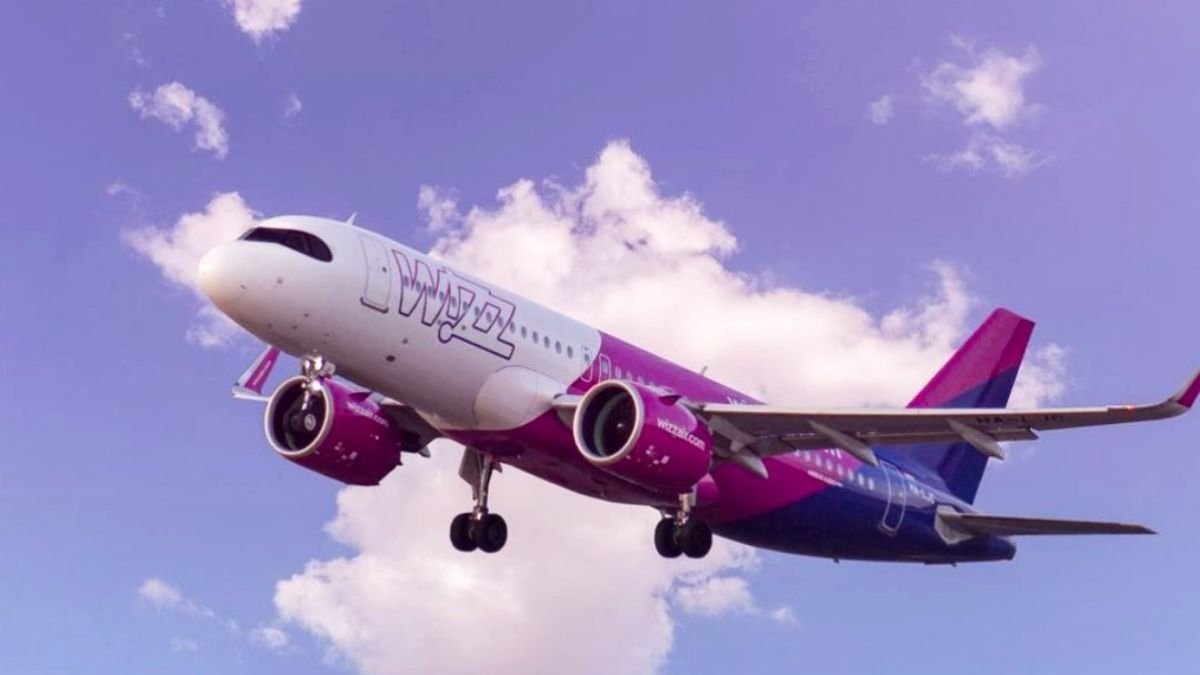
Abu Dhabi travellers aren’t wasting any time. With Wizz Air set to stop flying from the capital on September 1, 2025, residents are racing to grab whatever low-cost tickets are left. One-way fares start at just AED204, and for many, it’s the last chance to enjoy a budget-friendly trip before the airline pulls out of the UAE.
UAE Travellers Scramble For Wizz Air Deals Before Flights Stop In September
Your next adventure just got better!🎉 Travel between July 14th and Sep 30th, and enjoy 15% OFF on selected flights. Time to plan that getaway!🗺️https://t.co/RDiSCj4sYj pic.twitter.com/ehYZTnKv21
— Wizz Air (@wizzair) July 9, 2025
For a lot of UAE travellers, especially those based in Abu Dhabi, Wizz Air wasn’t just another airline; it was the one that made spontaneous trips possible. No extra fuss, no steep fares. If you wanted to escape for a few days without spending a fortune, it usually had you covered. A few days in Georgia? Last-minute plans to visit Armenia? Wizz Air made it doable without draining your wallet.
Now, as the airline prepares to stop operations, people are scrambling to book what could be their final trip with it. August flights are disappearing fast, with many travellers eager to make the most of these last few weeks. For fans of the airline, it’s not just about a flight; it’s a chance to revisit the freedom and spontaneity it offered, one more time.
The Most Popular Routes Flying Off the Charts
Ticket prices are doing much of the talking. These are the current one-way fares leaving from Abu Dhabi:
- Kutaisi, Georgia – AED204
- Yerevan, Armenia – AED264
- Baku, Azerbaijan – AED254
- Tashkent, Uzbekistan – AED314
- Almaty, Kazakhstan – AED404
For a lot of travellers, hopping over to Yerevan or Baku has often been more budget-friendly than spending a weekend in Dubai. That’s one big reason why flights are vanishing fast.
Almaty and Tashkent weren’t always on people’s travel lists. That’s slowly shifting now. With Wizz Air getting ready to close shop, there’s a noticeable rush. People are booking quickly, and by the looks of some travel sites, August flights are already starting to fill up.
What This Means For Travellers In The UAE
Now that it’s pulling out, the impact is real. People who once relied on those low-cost flights to lesser-known destinations are feeling the gap. The usual weekend getaway may soon come with a higher price—or fewer choices altogether. Travel experts say it’s best not to wait. Prices are climbing and availability is shrinking, with the final weeks expected to see the biggest surge in bookings.
Whether another budget airline will fill the gap remains to be seen. But for now, it’s all about squeezing in one last trip before Wizz Air officially takes off for good.
Cover Image Courtesy: Wizz Air/X
For more such snackable content, interesting discoveries and the latest updates on food, travel and experiences in your city, download the Curly Tales App. Download HERE.
First Published: July 27, 2025 11:21 AM
Flight Buzz
The Sabre: Hypersonic Plane Could Revolutionize Tourism with One Hour Flights from London to New York
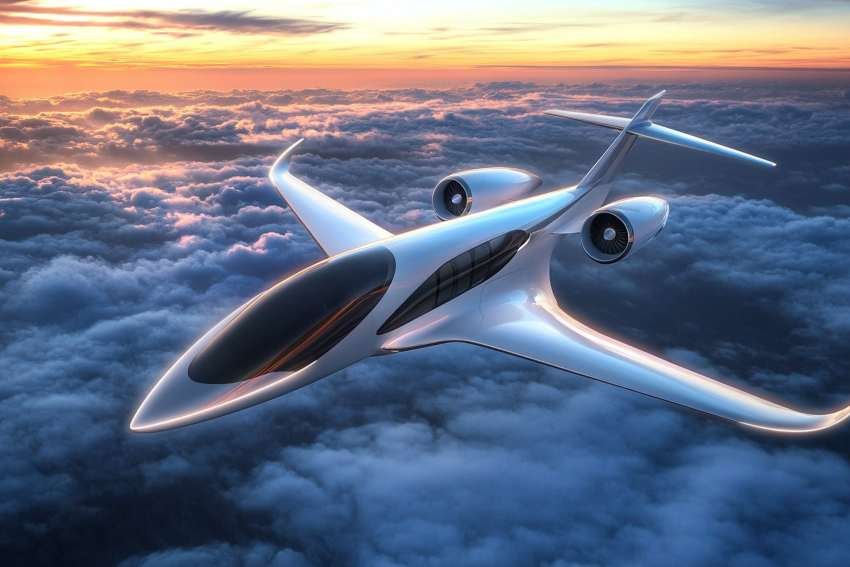
Sunday, July 27, 2025
Red swap Icon – black travel across the world where time means the most valuable of assets — a revolution in interconnected international travel has made its connections. The Sabre, a hypersonic plane under development in the U.K., would reduce the time of the flight between London and New York to an hour from the current seven. What is already a super-sonic achievement also has the potential to change the face of the tourism industry if it means cutting down the time it takes to cross the Atlantic. The plane, poised to hit speeds of Mach 5 (five times the speed of sound), is being developed as part of the European Space Agency’s (ESA) Invictus programme, with a planned flight demonstration scheduled for 2031. Exciting as the news is, this leads to pondering on what the tourist industry is going to do in light of this major shift in traveling behavior.
Changing the times of travel and the dynamics of tourism
Few among travelers, business people and the aviation sector haven’t dreamed for decades of shortening the duration of flights between two of the world’s most-visited cities, London and New York. These cities are connected by commercial flights today in about 7 hours, but with the Sabre, that travel time can be significantly reduced to only 1 hour. This has profound implications for the international tourism industry. A cut in flight time of that level won’t just make international travel faster—it will make it easier.
Tourism is based upon the same convenience, and long flights tend to keep tourists apart from one another in terms of geography. Many travellers from Europe, for example, are put off by the long flight times to the US, just as American travellers take a similarly dim view of a trip to Europe. By blanketing the ocean, the Sabre would make it possible for people to travel across the Atlantic for a more convenient day trip, supporting a greater number of one-day pleasure trips rather than long-stay commitments, and injecting money into the New York and London economies.
Reviving International Tourism: Is a New Travel Trend Emerging?
Perhaps the most important thing the Sabre can do for tourism is to make last minute international travel for short periods more possible for more people. Today, long-haul flights are considered a significant commitment of time and resources. Ordinary New York–London travel is seven hours’ flight travel time plus extra hours for check-in, security, and other non-stroll-on-the-grass necessities. Shrinking that time to a mere hour means a visit from the average tourist — for a day or a weekend or even one business meeting — is never more than a few hours of travel away.
And reduced transit time might encourage a surge in weekend travel, as tourists could more easily hop between cities. Let’s say, for example, the New Yorker starts taking spur-of-the-moment weekend trips to London or the other way around. This could mean a good opportunity for cultural interchange between two great cities and their periphery. It might also make it so other cities can benefit from shortened travel windows, with the potential for travelers to more effortlessly pop on a hypersonic plane to take in several destinations as part of the same travel package, bringing international travel within the reach of a whole new group of travelers and would-be travelers.
Economic Effects: The Rise of Hypersonic Tourism
The arrival of the Sabre could unlock new opportunities for businesses in the tourism industry. As flights are reduced, the luxury of high-speed travel may grow in popularity, similar to the way premium class seats on hypersonic jets, as well as for private charters and more customized travel plans. London and New York airports could also experience an influx in passenger numbers, lured by the one-hour flight.
A hypersonic tourism boom could, however, come with challenges. It could have a dramatic impact on existing transportation modes, like long-haul commercial flights. Airlines that currently dominate the transatlantic sector would find their territory challenged by hypersonic jets, and would be forced to innovate and cut costs in order to stay competitive. This may lead to cheaper flights for passengers, driving even more accessibility to the world of travel. But the cost of running hypersonic jets could be higher at first, meaning tickets may be more expensive in the near term.
In addition, since people can travel more quickly now, visit-och-place-h. new ways— The advent of more efficient travel options could mean tourists want more out of their destinations, and cities would have to offer higher-quality experiences in less time. Tourist areas could be overrun with visitors over shorter duration even as demand for lodging, dining and services peak. This is great news for tourism, but it also means you need to have the infrastructure in place so you don´t end up trashing the town!
Technological Innovation and Sustainability of Hypersonic Transportation
In addition to the speed, the Sabre’s novel technology might also change air travel in more far-reaching ways. The plane has advanced cryogenic technology that allows it to handle the high temperatures produced by hypersonic flight. The cooling system, which rapidly cools the air rushing into the engine to reduce engine temperatures, is critical to keeping the aircraft flying in a state of readiness that could exceed 4,000 miles an hour.
These types of technology have potential to lead to even more developments in aviation. As a leap forward, the Sabre itself is promising, but other countries and companies are also developing hypersonic aircraft. This push and pull of competition in the still nascent industry might mean an ever faster and greener airplane in the works. As these advances continue, we could very well see a more sustainable mode of long-distance travel that would make air travel’s carbon footprint a thing of the past!
Obstacles to overcome: High cost, and safety issues
But there are still a few hurdles to clear before the Sabre becomes a commercial reality. Cost is one of the biggest obstacles. The aircraft is believed to cost around GBP 6 billion to develop and, though the technology promises much, it may be years before it becomes commercially viable. Safety, too, is a big issue, for such aircraft undergo tremendous friction and thermal strain. The cryogenic pre-cooler system, developed for Sabre, is fundamental to the engines, but the extended life reliability of this now fundamentally validated technology has to be demonstrated when at the ready to bear the continual day in day out use of commercial aviation.
Meanwhile, the environmental impact of doing so is still poorly understood. Faster travel also could mean less fuel used per trip, but the vast amount of energy such high speeds requires could mitigate that gain, the report found. But there will be a need for even more disruption if the Sabre is to be a viable form of sustenance for people who do not want to ride a camel.
A New Era for Global Tourism
Looking to the future, this hypersonic Sabre jet is ushering in a new age of international travel. The Sabre’s ability to revolutionize air travel, by cutting down travel time and allowing for spontaneous international trips, as well as luxury travel at high speeds, is truly mind blowing. The next 10 years will be critical to whether this technology can make good on its promises and to whether it will be accessible to more than just the premier travelers.
As it stands, the future of hypersonic travel is just over the horizon. But as the engineering, innovation and infrastructure keeps advancing, the Sabre may one day change the face of tourism, connecting cities, cultures and economies at the speed of sound.
Flight Buzz
Dh204 airfare: UAE residents rush to book budget trips before Wizz Air exits Abu Dhabi
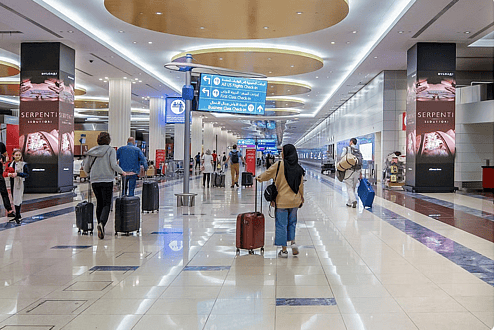
With fares starting as low as Dh204, UAE residents are scrambling to book last-minute holidays before Wizz Air ceases operations from Abu Dhabi on September 1, 2025.
The airline’s shutdown has triggered a surge in travel bookings to popular budget-friendly destinations, including Georgia, Armenia, Azerbaijan, Uzbekistan, and Kazakhstan.
A Khaleej Times review of fares for August shows one-way economy flights from Abu Dhabi priced at:
-
Dh204 to Kutaisi (Georgia)
-
Dh264 to Yerevan (Armenia)
-
Dh254 to Baku (Azerbaijan)
-
Dh314 to Tashkent (Uzbekistan)
-
Dh404 to Almaty (Kazakhstan)
Stay up to date with the latest news. Follow KT on WhatsApp Channels.
For many UAE residents, these ultra-low fares have made short getaways accessible and affordable. But with Wizz Air’s imminent departure, frequent flyers fear this era of budget-friendly international trips may soon become a thing of the past.
“It’s rare to find international tickets for Dh204,” said Prachi Mehta, an Indian expat and graphic designer at a media agency in Dubai.
“I checked fares for Georgia and found return tickets for under Dh550. Since my daughter’s school is on break and my husband can take leave too, we are planning one last trip on Wizz Air before they stop flying.”
She shared that her family had postponed a summer trip to Delhi due to expensive fares. “This deal came at the right time, a chance to explore a new country at a low cost.”
For Mohammed Shoib Khan, a 34-year-old Pakistani engineer living in Ajman, the low-cost airline has been a game changer. “I have travelled twice to the Caucasus with friends, but couldn’t take my family because they weren’t in the UAE then,” he said. “Now that they have joined me here, I want to take them on a quick holiday before prices go up.”
With Wizz Air’s exit on the horizon, some residents are already hunting for affordable alternatives. “We are planning to travel to a new destinations before my wedding in December. We have been looking out for options of low-cost airline. Hopefully, the travel is affordable in the month of September or October,” said Mohammed Ootom, a Jordanian expat who lives in Al Nahda, Sharjah.
The sales manager at a retail store in Sahara Centre recalled how the airline enabled spontaneous travel for him and his friends. “Once, we booked a trip to Azerbaijan while sitting at a café. It cost us less than a staycation in the UAE,” Mohammed said.
“Budget airlines like Wizz Air gave many people the chance to explore new countries without breaking the bank. We need more low-cost carriers to keep that dream alive,” he added.
-

 Brand Stories6 days ago
Brand Stories6 days agoBloom Hotels: A Modern Vision of Hospitality Redefining Travel
-

 Brand Stories23 hours ago
Brand Stories23 hours agoCheQin.ai sets a new standard for hotel booking with its AI capabilities: empowering travellers to bargain, choose the best, and book with clarity.
-

 Destinations & Things To Do7 days ago
Destinations & Things To Do7 days agoUntouched Destinations: Stunning Hidden Gems You Must Visit
-

 AI in Travel7 days ago
AI in Travel7 days agoAI Travel Revolution: Must-Have Guide to the Best Experience
-

 Brand Stories3 weeks ago
Brand Stories3 weeks agoVoice AI Startup ElevenLabs Plans to Add Hubs Around the World
-

 Brand Stories2 weeks ago
Brand Stories2 weeks agoHow Elon Musk’s rogue Grok chatbot became a cautionary AI tale
-

 Destinations & Things To Do20 hours ago
Destinations & Things To Do20 hours agoThis Hidden Beach in India Glows at Night-But Only in One Secret Season
-

 Asia Travel Pulse3 weeks ago
Asia Travel Pulse3 weeks agoLooking For Adventure In Asia? Here Are 7 Epic Destinations You Need To Experience At Least Once – Zee News
-

 AI in Travel3 weeks ago
AI in Travel3 weeks ago‘Will AI take my job?’ A trip to a Beijing fortune-telling bar to see what lies ahead | China
-

 Brand Stories3 weeks ago
Brand Stories3 weeks agoChatGPT — the last of the great romantics

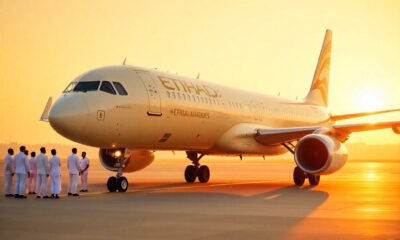



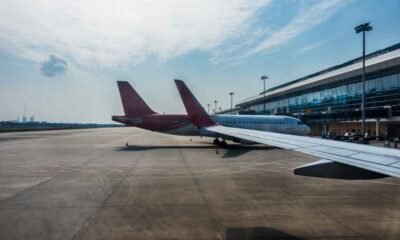

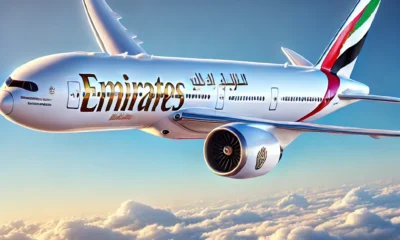





You must be logged in to post a comment Login